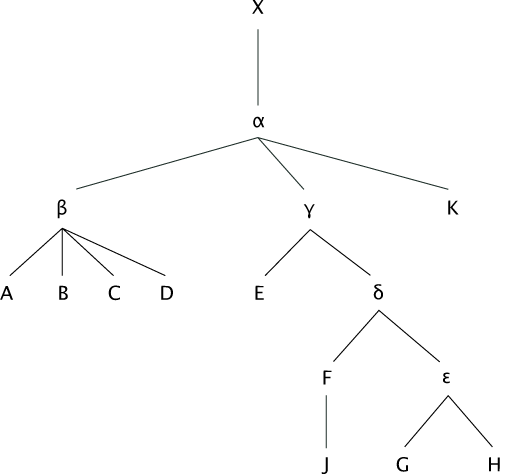A family (or a "class", from Latin "classis") is a group of witnesses that are related to each other by a genealogical relationship. A family is a branch in a tree-graph.
In a stemma, a family of witnesses will be gathered under the same hyparchetype. In the example below (Fig. 1), A, B, C and D could be called a family, EFGHJ another family.
If a tradition is too complex and / or too lacunary, shich makes it impossible to draw a stemma, it might still be possible to define some families, generally characterised by some significant secondary variants and ideally confirmed by the geographical origin of their witnesses. Such is the case of the Greek New Testament, for example, where it is possible to identify a "Caesarean" family, a "Byzantine" family, a "Western" family, etc.
Not all types of grouping of manuscripts may be called a family, however. Cf. group.
In large traditions, one family may be represented by one siglum in the critical apparatus.
Fig. 1. A re-drawn and simplified version of the stemma published in Maas (1960, p. 7).
Reference
– Amphoux, Christian-Bernard, ed. 2014. Manuel de critique textuelle du Nouveau Testament. Bruxelles: Safran.
– Maas, Paul. 1960. Textkritik. 4th ed. Leipzig: Teubner. – 1st ed. 1927.
In other languages
DE: Familie, Klasse
FR: famille, classe (de témoins)
IT: famiglia
CM

